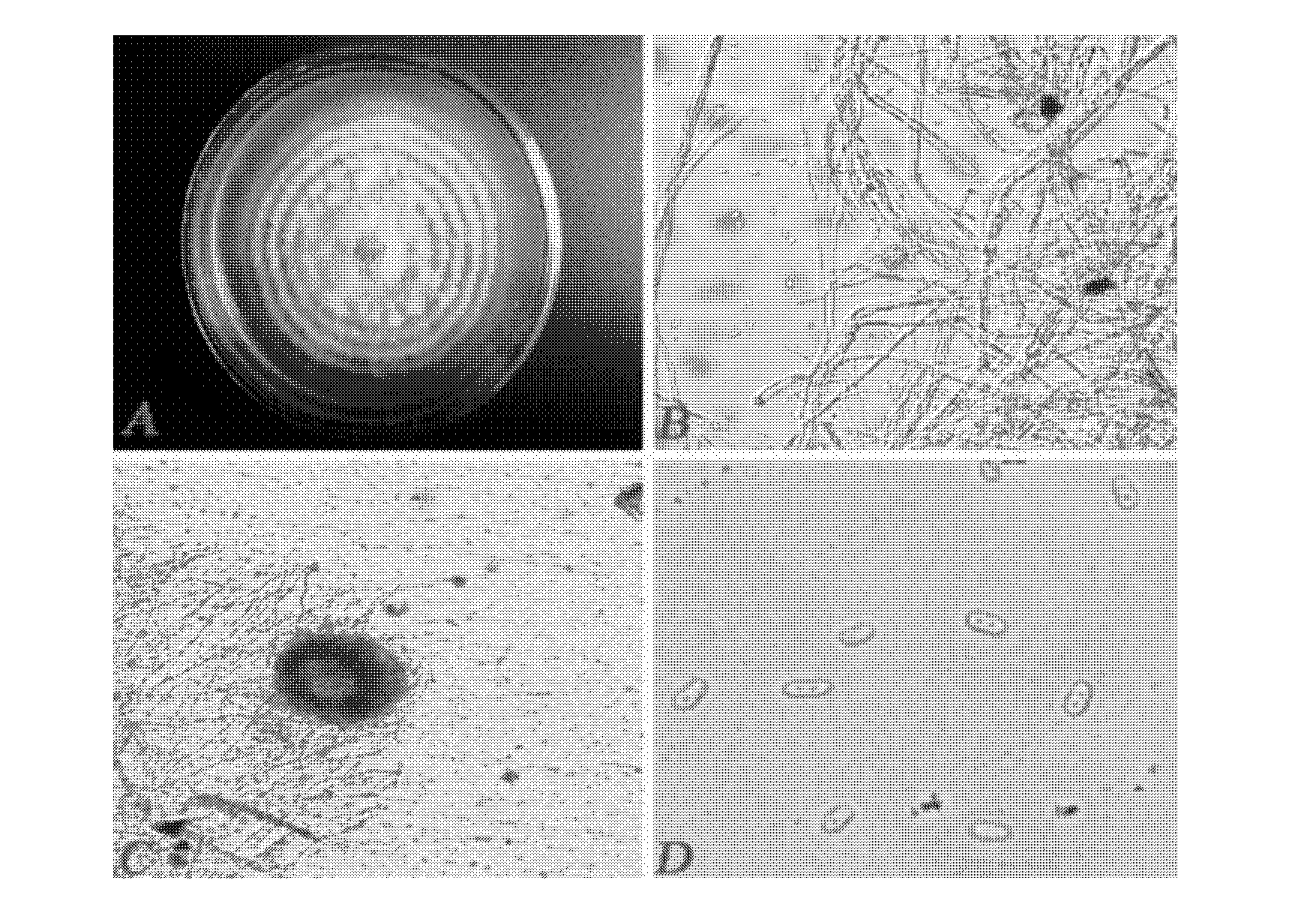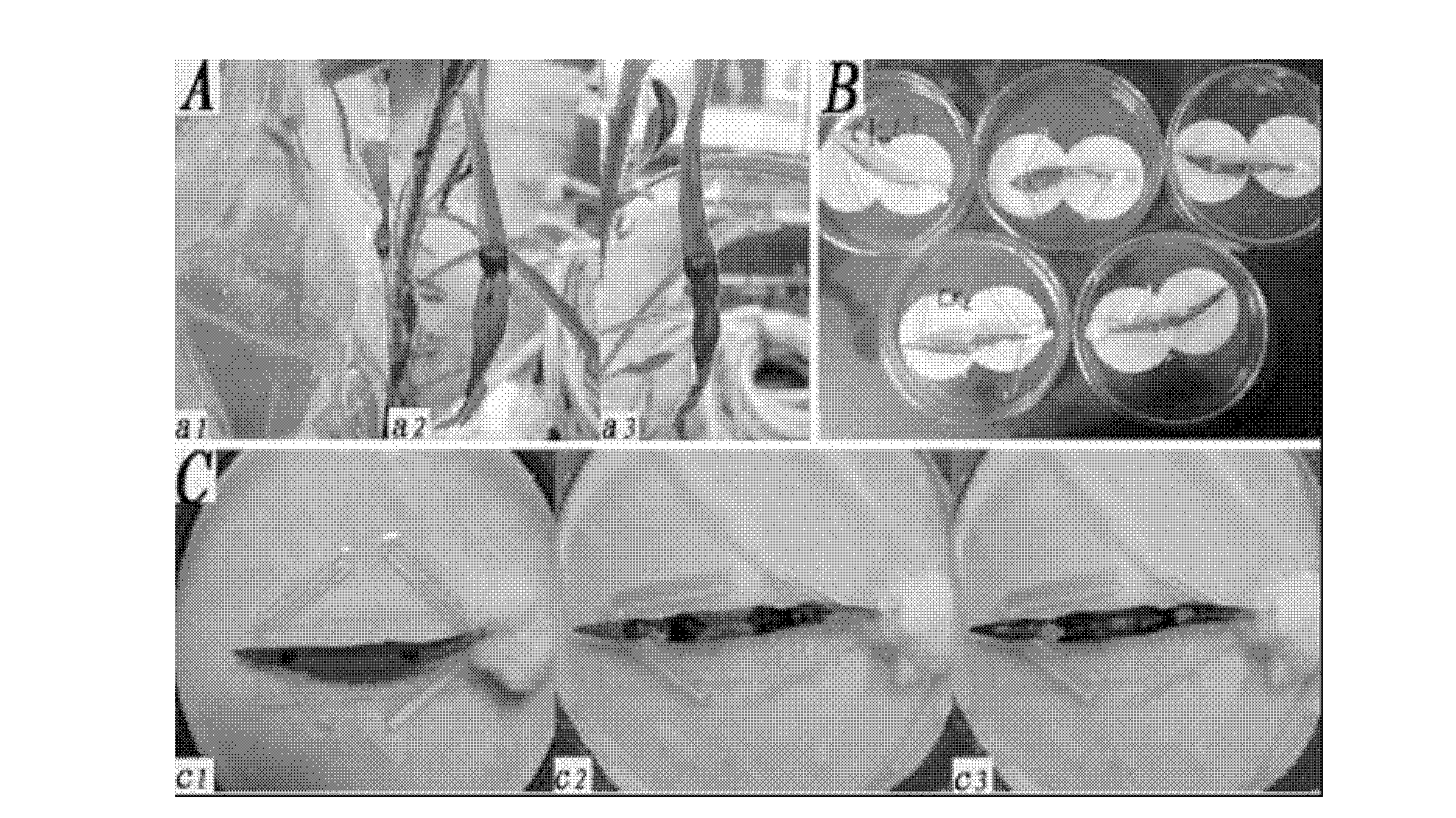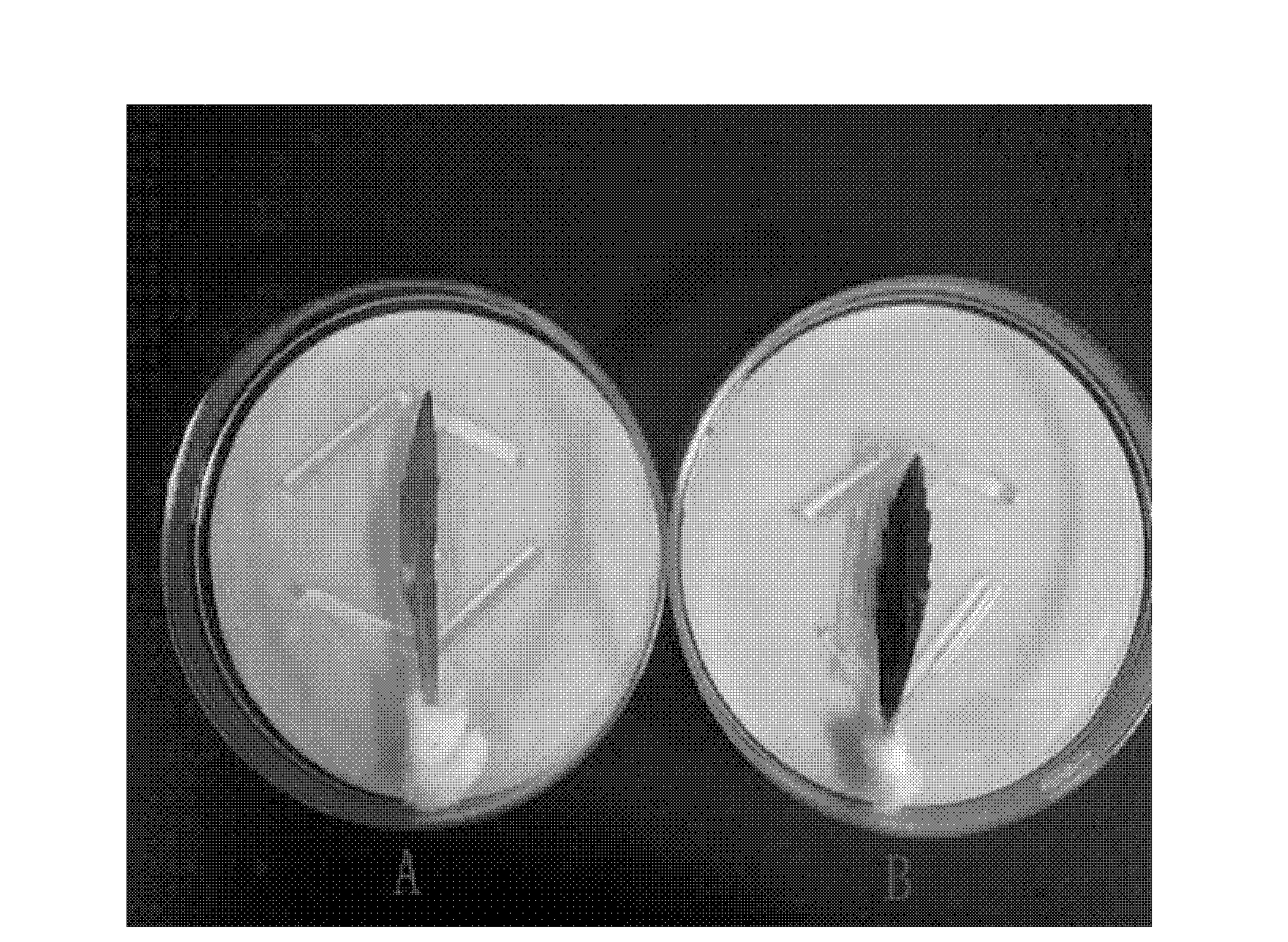Small spore phoma microspora for controlling conyza sumatrensis
A technology for Sumatran liquor and liquor grass, which is applied in the field of microsporum sclerotiorum, can solve the problems of labor and time-consuming artificial weeding, affecting economic structure and social stability, environmental pollution, etc. Application value, effect of strong disease control effect
- Summary
- Abstract
- Description
- Claims
- Application Information
AI Technical Summary
Problems solved by technology
Method used
Image
Examples
Embodiment 1
[0021] Embodiment 1. Isolation, purification and screening of Pheopointomyces microsporum
[0022] 1.1 Potato sucrose agar medium (PDA) for fungal isolation and culture, its formula is 200g of peeled fresh potatoes, 20g of glucose and agar each, add tap water to 1000mL. First add water to boil the potatoes, filter through double-layer gauze, add sucrose and agar, add an appropriate amount of water to 1000mL, stir well and put them into a triangular flask, put them in a sterilizer to sterilize and place them. Heat and melt before use, pour into sterilized petri dishes or test tubes to make flat or slant medium for fungal isolation and culture or strain preservation.
[0023] 1.2 Separation, cultivation and purification: Collect samples of S. chinensis plants with typical disease symptoms under natural conditions, rinse and cut off small pieces (2 mm) of the tissue at the junction of leaf disease spots and healthy parts, and put them in 5% sodium hypochlorite After surface disi...
Embodiment 2
[0027] Embodiment 2. Cultivation and inoculation condition test of Pheopointomyces microsporum
[0028] 2.1 Temperature test: On the potato dextrose agar (PDA) medium plate cultivated for 5 days, the mycelia pieces of the SMBC22 strain with a diameter of 0.5 cm were taken with a puncher, and inoculated on the PDA medium, respectively set at 10°C, 15°C, 8 temperature treatments of 20°C, 25°C, 30°C, 35°C and 40°C, each treatment was repeated 3 times. Place them in 7 pre-set light incubators with the required temperature for cultivation, and use the vertical cross method to measure the colony size every day, once every 24 hours, measure 5 times continuously, and record the data. The pH of the PDA medium is about pH7.0. Therefore, the optimum growth temperature of Phomyosporum microsporum was determined.
[0029] 2.2 pH experiment: PDA medium was used in the experiment, and 11 pH treatments were set up. The pH value of the medium was adjusted to 4.0, 5.0, 6.0, 6.5, ...
Embodiment 3
[0032] Embodiment 3. pathogenic bacteria crude toxin separation
[0033] 3.1 Preparation of pathogen culture filtrate: Pour 250 mL of potato dextrose (PD) culture solution into 500 mL Erlenmeyer flasks, sterilize and set aside. Select a colony with good growth for 6-7 days, use a puncher to take a Φ6 mm-sized bacterial cake, inoculate it into a triangular flask containing 250 mL of PS culture solution, inoculate 8 pieces in each bottle, and inoculate it in a 25 °C incubator for 12 h of light / 15 days of static culture under the condition of day. On the ultra-clean workbench, filter with qualitative filter paper (medium speed) to obtain the culture filtrate. Thus prepare enough pathogenic culture filtrate for toxin separation and extraction.
[0034] 3.2 Toxin extraction and activity test: organic solvent extraction: extract the culture filtrate with ethyl acetate, and extract each volume of culture filtrate with an equal volume of ethyl acetate for 3 times, each ...
PUM
 Login to View More
Login to View More Abstract
Description
Claims
Application Information
 Login to View More
Login to View More - R&D
- Intellectual Property
- Life Sciences
- Materials
- Tech Scout
- Unparalleled Data Quality
- Higher Quality Content
- 60% Fewer Hallucinations
Browse by: Latest US Patents, China's latest patents, Technical Efficacy Thesaurus, Application Domain, Technology Topic, Popular Technical Reports.
© 2025 PatSnap. All rights reserved.Legal|Privacy policy|Modern Slavery Act Transparency Statement|Sitemap|About US| Contact US: help@patsnap.com



